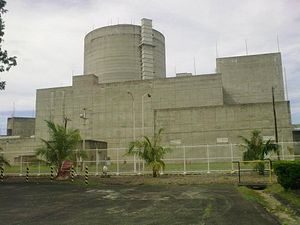Over the past few months, Philippine officials have been more publicly mentioning the idea of reviving nuclear power in the Southeast Asian state. While it is still early days and much remains to be worked out, the issue deserves attention amid the historical and contemporary context of nuclear power in the Philippines as well as the broader conversation about some Southeast Asian states considering nuclear power for their future energy needs to varying degrees.
While Southeast Asia has traditionally been seen as nuclear free – home to one of the world’s regional nuclear weapons free zones with the Southeast Asia Nuclear Weapons Free Zone (SEANWFZ) and with countries such as Indonesia that continue to be committed to the goal of disarmament – a number of countries have been considering the use of nuclear power in their energy mixes. Though that could help satisfy the Southeast Asia’s growing energy thirst in a more climate-friendly and cost-efficient manner, there are also serious safety and security risks.
One of the Southeast Asian countries where nuclear power has been previously mulled is the Philippines. The Philippines briefly flirted with the idea of nuclear power under former President Ferdinand Marcos, even though the country’s only nuclear power facility, the Bataan Nuclear Power Plant (BNPP), was never really operational due to a range of corruption and safety issues. BNPP has remained mothballed since then, and this past experience with nuclear power had seemed to suggest that a potential revival of the idea would be difficult to actually take root.
But under the Duterte administration, the Philippines has shown signs of reconsidering the use of nuclear energy as part of its energy mix, due to a range of considerations including rising energy demand projections. Beyond occasional comments made by Philippine officials, some preliminary actions have also been taken, with a case in point being an integrated nuclear infrastructure review mission by the International Atomic Energy Agency (IAEA) and the DOE-Nuclear Energy Program Implementation Organization (NEPIO) to assess the feasibility of a national nuclear power program late last year. As this has occurred, there have also been pockets of opposition to the idea based on both historical and contemporary realities.
In recent weeks, Philippine officials and experts have been in the headlines speaking about the topic, with a case in point being an interview with ABS-CBN where Patrick Aquino, the head of the secretariat for NEPIO, cited a nationwide perception survey the agency had conducted, which he claimed showed that most Filipinos were favorable to the adoption of nuclear power. Nuclear power has also factored into the discussions of some of the Philippines’ foreign alignments, be it potential Russian assistance in its pursuit of nuclear power or the lifting of a ban imposed on fish species from the nuclear-hit region of Fukushima in Japan.
To be sure, discussions are still ongoing and it is still early days with respect to the potential revival of nuclear power in the Philippines. There are still unanswered questions with respect to the government’s plans, including the feasibility of various approaches that could be taken including restarting BNPP (for which the Philippines still pays maintenance costs) or constructing new plants, as well as how various economic and security challenges would be addressed. A series of steps would need to be taken before kickstarting such a program, which the review mission conducted last year concluded as well. And given the lingering opposition that continues to be seen on the nuclear power question, there will likely need to be a broader conversation between the government and other actors to ensure that public concerns are addressed.
Nonetheless, given both the words and actions of the Philippine government recently, this issue is worth paying close attention to in the next few years. With Duterte just halfway through his six-year term, there is still time for the administration to pursue a decision that would have implications not only for nuclear power in the Philippines, but also the wider Southeast Asian region more generally as well.

































